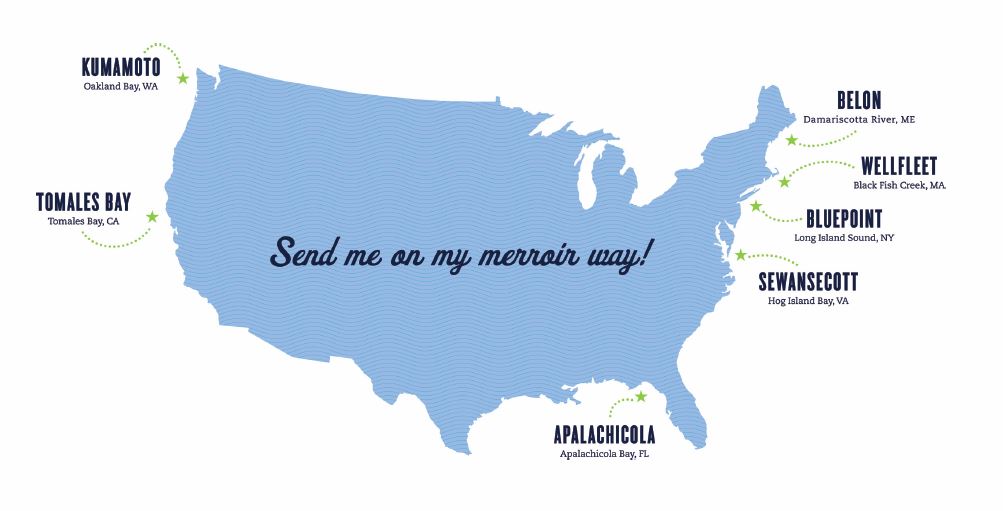One of the most frequent questions we’re asked is how to match flavors in oysters to geographic origin. Since many menus simply list the names and locations of oysters, it’s often an exercise in guesswork to figure out what a particular oyster will taste like, and whether you should order it.
While there are no hard and fast rules, and each oyster has its own merroir and may pose an exception, we can give the following guidelines to help you choose. And if you order something that isn’t quite what you expected, enjoy the surprise and make a note for next time.
- West Coast oysters are sweeter and creamier than East Coast oysters. The Pacific oyster species commonly grown on the West Coast has more sweetness in the meat, in addition to less saline water.
- Oysters from the Northeast are more briney than oysters from the Chesapeake Bay, Virginia and the Gulf. This has to do with the salinity of the water and the distance from these oysters to the ocean.
- Belon oysters from Maine and Olympia oysters from Washington will taste intensely musky and fishy (in a good way!), and a bit metallic. These oysters are relatively rare and hail from the ostrea genus (whereas other oysters are from the crassostrea genus), which means they have flat shells and a flavor that is quite distinctive from your average oyster. We highly recommend trying one if you’re a seasoned oyster fan.
What’s the best way to organize a tasting plate? If you’re tasting oysters from several different regions, we recommend ordering them from least to most briney. Usually, this means trying the West Coast oysters before the East Coast oysters, but this is not a hard and fast rule, and depends on the selection you have.
